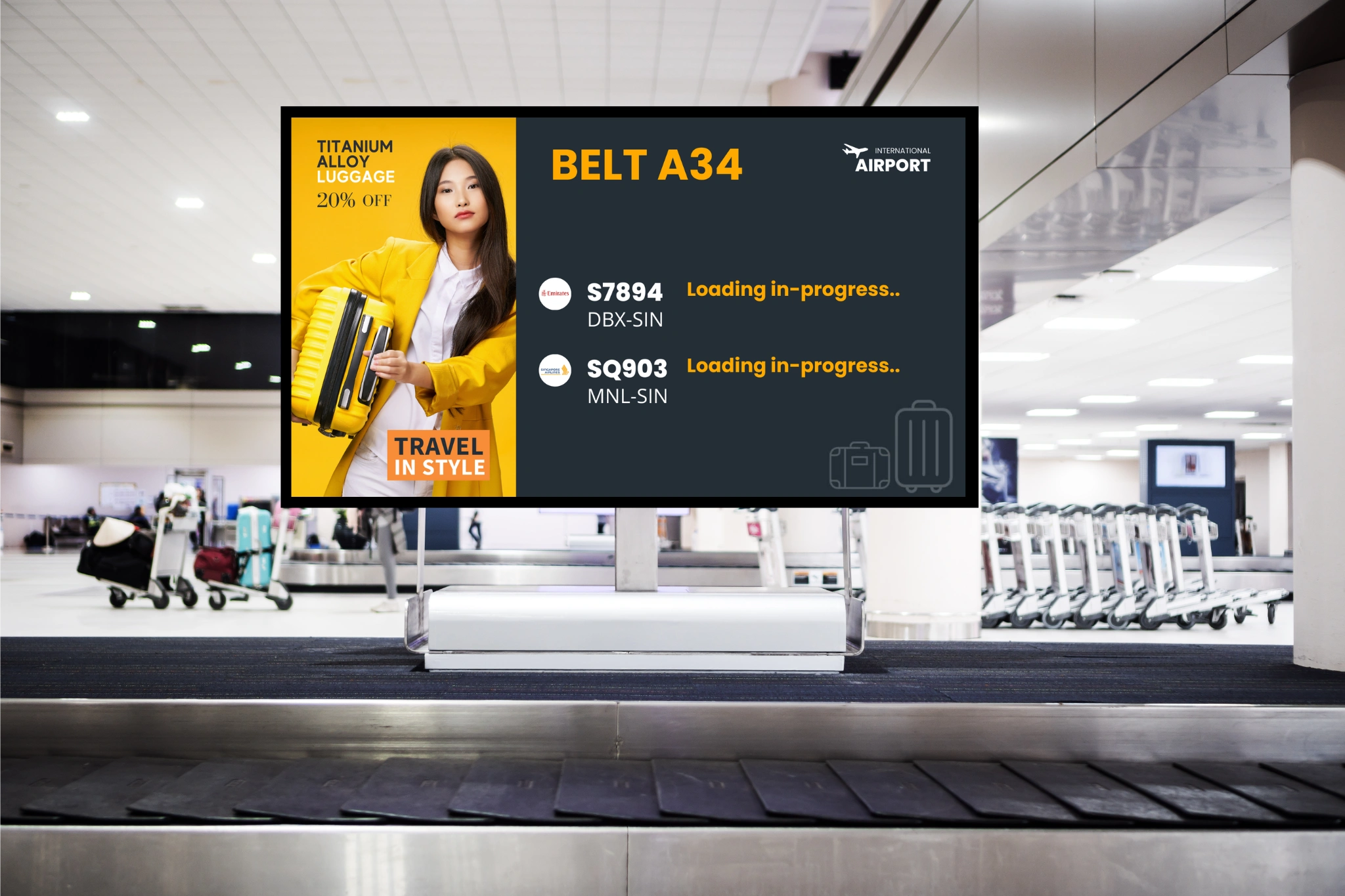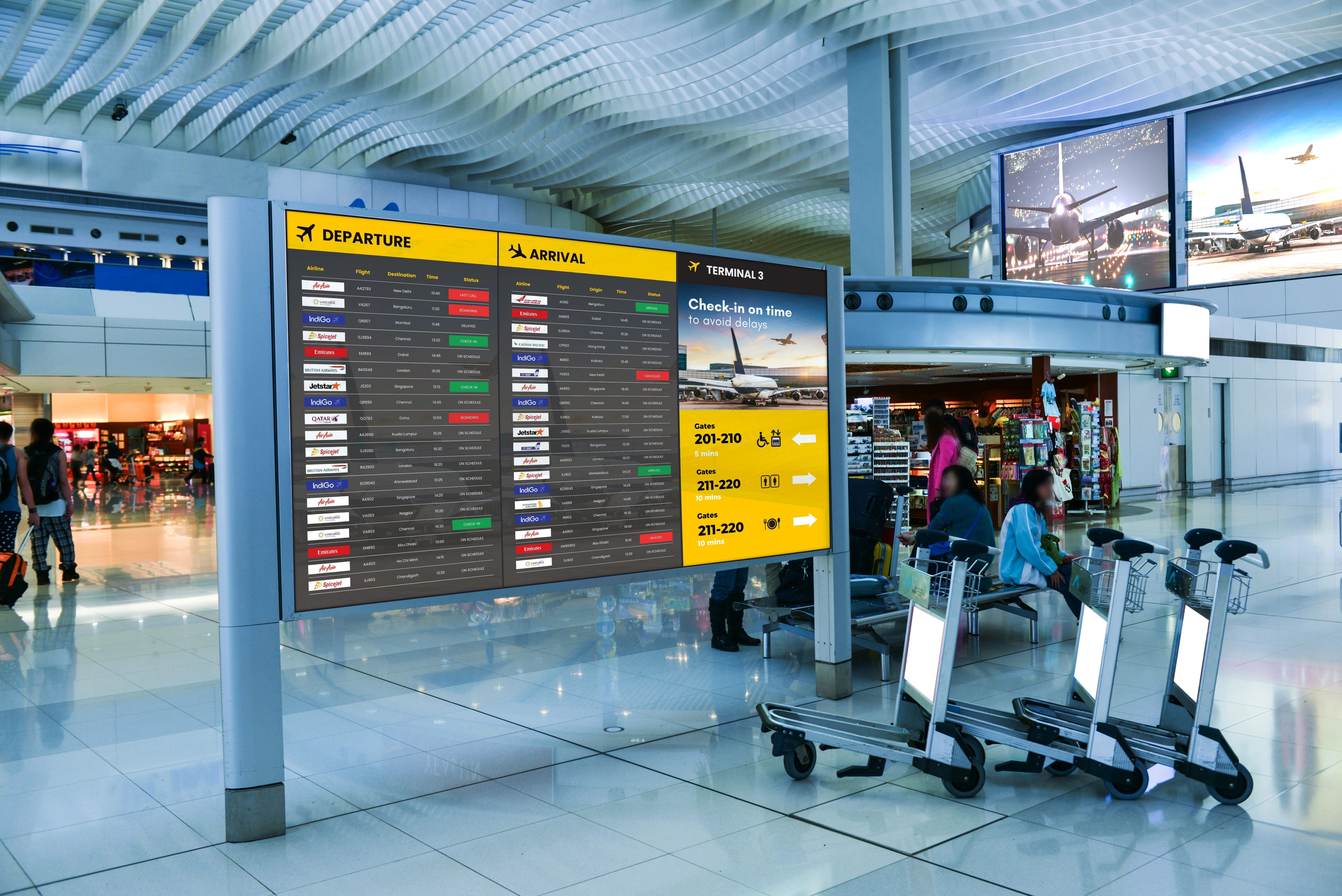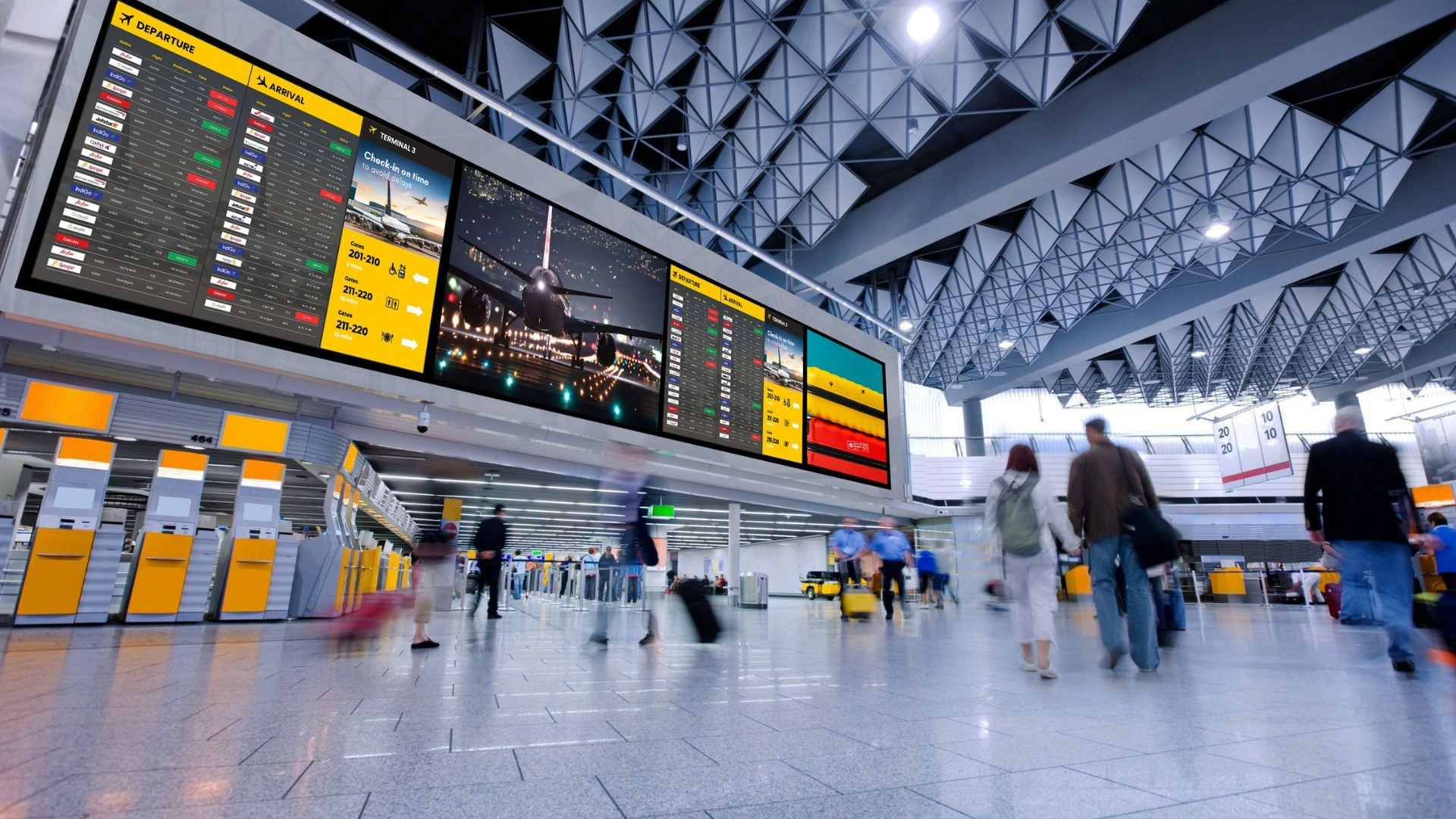Scala’s Quick Guide to Digital Signage for Airports
by Scala Team
Scala’s Quick Guide to Digital Signage for Airports
Scala Team

The importance of digital signage for airports
Airports are bustling hubs of activity, with travellers constantly on the move. In this fast-paced environment, effective communication is crucial. That’s where digital signage becomes an indispensable tool for airports to keep passengers informed and organised while streamlining operations. Digital signage for airports has the power to enhance the overall passenger experience and improve customer satisfaction by:
- providing real-time flight updates, directions, and important announcements;
- reducing confusion and traveller stress, and
- improving airport efficiency.
In today’s digital age, airports are investing heavily in digital signage solutions to stay ahead of the curve and meet the needs of modern travellers.
Types of digital signage solutions for airports
Airport digital signage encompasses a range of technologies that serve different purposes to enhance the passenger experience. Here is a quick guide to the most critical types.

Flight Information Display System (FIDS)
FIDS displays are the central component of any digital signage system for an airport, showing real-time flight schedules and updates on departures, arrivals, gate changes, and other essential flight information. FIDS displays integrate with existing flight data sources and platforms via API to deliver real-time flight schedules and updates on digital displays throughout the airport. They are found in multiple locations throughout the airport, with each terminal usually having its own dedicated FIDS displays.
Interactive digital wayfinding
Easy wayfinding is an essential part of reducing the stress associated with travelling. Interactive digital wayfinding in airports usually takes the form of interactive screens or kiosks that provide detailed interactive maps and directions. With just a few taps, travellers can easily find their way to any location in the airport, from arrival and departure gates to restaurants, shops, and other amenities.
Self-check-in kiosks
are becoming more prevalent in airports, providing passengers with a quick and efficient way to check-in for their flights. These kiosks feature touch screens that allow passengers to enter their information, select seats, print boarding passes, and even drop off their baggage.
Baggage carousel displays
Baggage carousel signage is another crucial digital signage solution for airports. These screens display information about baggage claim areas, flight numbers, and even estimated arrival times of luggage. It helps passengers easily locate their belongings and reduces the likelihood of lost or misplaced luggage.
Airport advertising displays
Digital signage advertising is being embraced by airports the world over as a way to deliver relevant, personalised advertising content to passengers while also driving an additional revenue stream. Through strategically placed screens throughout the terminal, airports can display advertisements, promotions, and sponsored content.
Emergency digital signage for airports
Emergency alert digital signage plays a crucial role in ensuring passenger safety during critical situations. With centralised content management, emergency alerts and evacuation instructions can easily be published in real-time to all displays throughout the airport terminal.
Best practices for effective airport digital signage design
When it comes to designing effective airport digital signage, there are several important factors that should be taken into consideration.

Accessibility and readability
First and foremost, accessibility and readability are key. Ensure that the font size and colour contrast of text on airport digital screens are easily visible, even from a distance. This is particularly important for passengers with visual impairments or those who may be in a rush.
Placement of screens
Optimum placement of digital signage, Flight Information Display System (FIDS) screens, and interactive kiosks throughout the airport is essential. Strategically positioning displays in high-traffic areas means passengers are most able to access important information when they need it, from departure and arrival times to gate changes and directions.
Multiple language capability
Multi-language capability is essential in today’s highly globalised world. Airports serve passengers from all around the world, and being able to display critical information in multiple languages is crucial for effective communication. This will help ensure that all passengers can understand and access important information.
Centralised content management
Having a centralised content management system for airport digital signage allows airports to easily update and publish changes in real-time, as well as schedule content to publish, ensuring that information is accurate and up to date. This also streamlines the management process and reduces the risk of inconsistencies.
Take your airport to the next level with Scala digital signage for airports
Scala helps airports and other transport hubs create superior passenger experiences by engaging and informing passengers with real-time updates and useful information. Our digital signage solutions for airports drive dynamic messaging, interactive experiences, convenience and personalisation. Scala powers thousands of transportation digital displays worldwide and leads the wave of digital transformation in major transportation hubs.
Find out more about Scala digital signage solutions for Transportation:
https://apac.scala.com/in/industries/transportation/
About the Author:
Scala digital signage experts share their experience and thoughts in our blog to provide practical tips and advice for real-world applications. Our team aims to offer interesting content through a variety of formats including long form articles, video logs, interviews and infographics.




